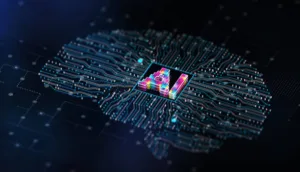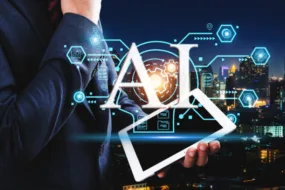AI security:

Artificial intelligence (AI) is rapidly transforming our world, from facial recognition software to self-driving cars. But with this incredible power comes a new kind of vulnerability: AI security weaknesses. Hackers are constantly seeking ways to exploit these weaknesses, potentially causing significant damage.
This blog post sheds light on how hackers target AI systems and equips you with the knowledge to fortify your defences.
Understanding the AI Security Threat Landscape
AI security vulnerabilities can be broadly categorised into four main areas:
1. Data Poisoning: Imagine giving a hungry learner the wrong information. That’s essentially data poisoning in AI. Hackers inject malicious data into the training datasets used to build AI models. This skewed data leads the model to learn faulty patterns and make inaccurate decisions.
Here’s an example: An AI system trained to detect fraudulent financial transactions might be fed data with manipulated amounts or timestamps, causing it to overlook suspicious activity.
2. Evasion Attacks: Think of a master illusionist tricking an audience. Evasion attacks work similarly. Hackers craft specific inputs designed to manipulate an AI system’s decision-making process.
For instance, hackers might alter a self-driving car’s sensor data to create blind spots, potentially causing accidents.
3. Model theft: Imagine taking a secret recipe. In AI, hackers might try to steal a trained AI model altogether. This stolen model could then be used for malicious purposes.
4. Deepfakes: AI can be used to create incredibly realistic video and audio forgeries, known as deepfakes. Hackers can leverage deepfakes to spread misinformation, damage reputations, or even commit financial fraud.
Read More: Why AI is Not an Effective Cybersecurity Solution
The Devastating Impact of Exploited AI Security System

The consequences of a successful AI security breach can be far-reaching. Here are some potential risks:
1. Financial Losses: Hackers could exploit vulnerabilities in AI-powered financial systems to steal money or manipulate markets.
2. Safety Hazards: Compromised AI in self-driving cars, medical diagnosis systems, or critical infrastructure management could lead to catastrophic events.
3. Privacy Violations: AI systems often handle sensitive data. Security breaches could expose this data, leading to identity theft or other malicious activities.
Building a Fortress: Strategies to Secure Your AI Security Systems
Fortunately, there are steps you can take to mitigate AI security risks:
1. Data quality is paramount. The foundation of a robust AI system is high-quality data. Implement rigorous data validation techniques to ensure the training data is accurate, complete, and free from manipulation.
2. Embrace Adversarial Training: Think of training your AI system like preparing for a competition. Expose it to deliberately crafted adversarial examples (data designed to fool the system).
3. Your AI systems require constant monitoring, just like fire alarms. Develop mechanisms to detect anomalies in data and system behaviour, allowing for swift intervention in cases of suspicious activity.
4. Invest in Security Expertise: Building strong AI security requires specialised knowledge. Consider partnering with cybersecurity firms or hiring AI security professionals to bolster your defences.
5. Human Oversight: AI is powerful, but it shouldn’t operate in a vacuum. Maintain human oversight to ensure AI decisions are aligned with ethical guidelines and catch potential biases or errors.
6. Transparency by Design: Whenever possible, strive for transparency in your AI systems. Understanding how AI arrives at its conclusions can help identify potential vulnerabilities and build trust with users.
Read More: Space Cybercrime: The Role of International Cooperation
Beyond the Basics: Exploring Advanced AI Security Techniques

This blog post has provided a foundational understanding of AI security vulnerabilities and mitigation strategies. Here are some additional areas to consider for further exploration:
1. Explainable AI (XAI): XAI techniques can help us understand how AI models arrive at decisions, making it easier to detect biases or vulnerabilities.
2. Differential Privacy: This approach injects controlled noise into AI training data, protecting sensitive information while preserving the model’s effectiveness.
3. Formal Verification: Formal verification methods mathematically prove an AI system’s correctness under certain conditions, providing a high level of security assurance.
The Future of AI Security Systems: Collaboration is Key

Securing AI is an ongoing challenge that requires collaboration across different stakeholders. Here are some ways we can move forward:
1. Industry Standards: Creating standardised security practices for AI can significantly improve overall defence strategies.
2. Sharing Knowledge: Open communication and sharing best practices among researchers, developers, and security professionals are crucial for staying ahead of emerging threats.
3. Investing in Research: Continued research and development in AI security are essential to identify new vulnerabilities and create robust defence mechanisms.
4. Information is key. By staying informed about AI security threats and implementing robust defence mechanisms, we can ensure that AI continues to be a force for positive change in our world.
Read More: Space Cyberattacks: Exploring the Looming Threat
Conclusion
The rise of AI brings immense potential, but it’s vital to recognise and address its security vulnerabilities. By understanding how hackers exploit AI systems and implementing robust defence strategies like data quality control, adversarial training, and continuous monitoring, we can build a future where AI thrives securely. Remember, collaboration is key. Working together, AI developers, security experts, and policymakers can create a secure environment for responsible AI development and deployment. As AI continues to evolve, so too must our approach to securing it. By staying informed about emerging threats and embracing advanced security techniques like explainable AI (XAI), differential privacy, and formal verification, we can ensure AI remains a powerful tool for good.










